Introduction
The razor-slim Huawei Ascend P6 has snatched the slimmest smartphone title right under the nose of the big guns. The China-based maker is not only keeping up with its high-profile competitors in terms of both hardware and software, but has achieved what few others have lately. The Ascend P6 offers a well-balanced feature set in a beautifully designed body, record-breaking thin at that.
The Huawei Ascend P6 was introduced in June and is now officially hitting the shelves with its record still intact. The Ascend P6's signature feature is the phone's 6.2mm profile, edging ahead of even the impressively slim Sony Xperia Z Ultra.
Sure, there has been word of even thinner phones like the Vivo X3(5.6mm) and the Umeox X5 (5.6mm), but they're the kind of gadgets to give small-time Chinese makers their 15 minutes of fame rather than make a big splash globally. Huawei's vision, on the other hand, goes well beyond the home market - though what a market that is!
The Ascend P6 is powered by the company's home-brewed chipset - the K3V2 - featuring a quad-core 1.5GHz Cortex-A9 processor, a 16-core GPU and 2GB of RAM. Having already seen this configuration on the Ascend Mate phablet, we can confirm that it's a more than adequate match for the 720p screen.
Here is the full breakdown of the Huawei Ascend P6.
Key features
- Ultra-slim 6.2mm profile
- Quad-band GSM/GPRS/EDGE; penta-band 3G with HSPA
- 4.7" 16M-color 720p IPS+ LCD capacitive touchscreen with Gorilla Glass, usable with gloves
- Android OS v4.2.2 Jelly Bean with Emotion UI
- Quad-core 1.5 GHz Cortex-A9, 16-core GPU; 2GB of RAM; Huawei K3V2 chipset
- 8 MP autofocus camera with LED flash, 1080p video recording @ 30fps
- 5 MP front-facing camera, 720p video recording
- Dual-band Wi-Fi a/b/g/n, Wi-Fi Direct and DLNA
- GPS with A-GPS and GLONASS
- 8GB of built-in storage
- microSD card slot, side-mounted, hot-swap
- microUSB port with USB host, USB OTG
- Bluetooth v3.0
- FM radio
- Standard 3.5 mm audio jack
- Accelerometer and proximity sensor
- Active noise cancellation with dedicated mic
Main disadvantages
- Non-exchangeable battery
- No LTE or NFC support
- Video recording could be better
- Disappointing audio output
As you can see, there is very little the Ascend P6 fails to deliver. Some may find the non-removable battery unacceptable, but lots of manufacturers these days are resorting to a similar design in order to keep their phones beautifully slim, yet sturdy enough.
For NFC and LTE, there's the Huawei Ascend P2, which was introduced early on in Barcelona. Actually, the jump from P2 to P6 is not to be construed as a massive improvement in terms of level of equipment. The two handsets are more like alternative versions for those with different design preferences. What's more important is that with the Ascend P series Huawei's looking quite solid in the upper midrange.
Anyway, let's cut to the chase. Follow us on the next page where the Ascend P6 is given a thorough hardware inspection.
Unboxing the Huawei Ascend P6
Our retail package of the Ascend P6 came with a USB cable, an AC adapter, a headset and a semi-transparent rubber case, which fits well and looks reasonably good. The box itself is slim but wide, tucked into a cardboard sleeve, each accessory individually packed in its own container, which is a nice touch.
360-degree view of Huawei Ascend P6
The Huawei Ascend P6 measures 132.7 x 65.5 x 6.2 mm and weighs just 120 grams. Not only is it the thinnest smartphone we've handled, but also one of the lightest quad-core devices we've held to date.
Design and build quality
The slim profile can certainly claim most of the credit, but the good looks of the Huawei Ascend P6 are a combination of features: the brushed metal finish of the rear, the curved bottom and the assertive angular frame.
The design is consciously minimalist, and even though we tend to prefer hardware Home keys, the neat button-free front of the Ascend P6 seems like the right choice for a phone this slim. The aluminum sides look suspiciously similar to the iPhone 4/4S design, but it's an accent that works well here and we didn't mind it at all.
The unibody design has ruled out a removable battery, but has certainly contributed to the amazingly slim profile and good looks.
With a 4.7" screen, the Huawei Ascend P6 is by no means a small device but the ultra-slim unibody feels refined and solid, yet surprisingly light. All bits fit perfectly together in a nearly seamless design and there are no cheap-looking accents whatsoever. The entire front is protected by a piece of Gorilla Glass, while the back is nicely textured like brushed metal. The frame around the sides is made out of aluminum. It's a combination that works quite well.
The handling of the Huawei Ascend P6 is excellent for a device this size. The matte back is nice and grippy, while the slim body certainly helps single-handed use. The Ascend P6 is quite pocket friendly too - something we rarely get with everyone's obsession with big screens. We used the P6 for quite a while and we have to admit, it's one of those devices that you can slip into a pocket, which you'll pat now and then to make sure it's actually still there. Oh yes, it's that light and compact!
Controls
With the navigation keys moved over to the screen, the things to note at the front of the Huawei Ascend P6 are above the 4.7" IPS+ LCD. There's a status LED and sensors left of the earpiece and a 5MP front camera on the right.
Yep, that's a five megapixel camera up there and Huawei is really proud of its front-facer. It's a fixed focus unit, but one that does some great portrait shots and has the Beauty Face option available. It also shoots 720p videos @ 30fps. We'll get into more detail there in the camera chapter of the review.
In terms of controls, we've got a pretty crowded right side with a Power/Lock key and a volume rocker, followed by microSIM and microSD card slots compartments. These are small trays that take an eject pin to open.
Now, as far as we know, there is also a regionally available Dual SIM version of the Ascend P6. In the dual SIM case, both metallic trays accommodate SIM cards and there is no microSD slot. To make up for that, the dual SIM version comes with 16GB of storage instead of only 8GB.
The eject pin is inserted into the 3.5mm audio jack on the left-hand side of the device - that's an unusual solution, but we can see the point: that way the eject tool is always available and it also protects the port from getting filled with dust.
On the other hand though, one risks misplacing the eject tool every time they need to plug a headset -the tiny piece is really easy to lose.
The top of the Huawei Ascend P6 accommodates the microUSB port and the secondary microphone, which is used for active noise cancellation in calls.
Across at the bottom, the primary microphone is the only thing of interest.
The 8 megapixel camera lens is placed in the top left corner of phone's back. The single-LED flash is next to it too. The discrete loudspeaker grille is in the bottom left corner.
The Huawei Ascend P6 comes with a nice rubber case in the box that tightly wraps around the handset. The case is transparent so the phone's good looks aren't sacrificed and it will do a nice job of keeping it safe. It inevitably adds to the thickness though.
Display
The Huawei Ascend P6 has a 4.7" IPS+ LCD of 720p resolution. This works out to a pixel density of 312ppi, which is almost the same as what the Apple iPhone 5 has.
The Ascend P6 offers wide viewing angles with no color shift and little contrast loss when you view the display at an angle. The colors are spot on, the contrast is great and generally we are very pleased with the image quality.
| Display test | 50% brightness | 100% brightness | ||||
| Black, cd/m2 | White, cd/m2 | Black, cd/m2 | White, cd/m2 | |||
| Huawei Ascend P6 | 0.14 | 136 | 986 | 0.62 | 670 | 1080 |
| Sony Xperia ZL | - | - | - | 0.44 | 575 | 1294 |
| Sony Xperia Z | - | - | - | 0.70 | 492 | 705 |
| Huawei Ascend Mate | 0.23 | 222 | 982 | 0.67 | 711 | 1053 |
| HTC One | 0.13 | 205 | 1580 | 0.42 | 647 | 1541 |
| HTC Butterfly | 0.14 | 173 | 1200 | 0.45 | 501 | 1104 |
| Samsung I9505 Galaxy S4 | 0 | 201 | ∞ | 0 | 404 | ∞ |
| Oppo Find 5 | 0.17 | 176 | 1123 | 0.51 | 565 | 1107 |
| Samsung N7100 Galaxy Note II | 0 | 215 | ∞ | 0 | 402 | ∞ |
| LG Optimus G Pro | - | - | - | 0.41 | 611 | 1489 |
| Nokia Lumia 920 | - | - | - | 0.48 | 513 | 1065 |
| LG Optimus G | 0.14 | 197 | 1445 | 0.33 | 417 | 1438 |
| Nexus 4 | 0.22 | 314 | 1447 | 0.45 | 608 | 1341 |
| Samsung I9300 Galaxy S III | 0 | 174 | ∞ | 0 | 330 | ∞ |
| Apple iPhone 5 | 0.13 | 200 | 1490 | 0.48 | 640 | 1320 |
The screen brightness control in the Android notification area is a single virtual key with four steps: Automatic, 100%, 50% and 0% brightness. There's no brightness slider as in competing Android devices.
Hidden further down in the Display settings, there is an additional Smart Backlight toggle - this could be enabled to assure the automatic brightness control doesn't do rapid jumps when adjusting the illumination level. If switched on, the Ascend P6 will calculate the next light transition point in a bright lighting environment and maintain a gradient brightness variation .
Sunlight contrast ratio
- Nokia 808 PureView4.698
- Apple iPhone 42.016
- HTC One mini2.003
- Sony Ericsson Xperia ray1.955
- Samsung Galaxy Camera1.938
- HTC Butterfly1.873
- Huawei Ascend P61.865
- Sony Xperia V1.792
- Sony Xperia U1.758
- LG Optimus 4X HD1.691
- HTC One V1.685
- BlackBerry Q51.682
- Samsung Galaxy mini 21.114
You can find all about our display testing routines here.
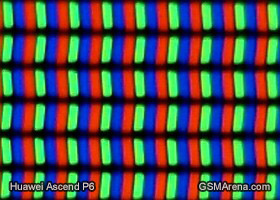
Huawei Ascend P6 screen under a microscope
The Huawei Ascend P6 also offers the rare option to adjust the screen's color temperature. It's a slider that gives you control on whether the screen has a cooler or warmer (blue vs. amber) tint.
Finally, the 4.7" IPS 720p touchscreen is also highly sensitive thanks to the Magic Touch tech, which allows you to use it even with gloves, a feature that will surely come in handy in cold weather.
Synthetic benchmarks
The Ascend P6 is powered by Huawei's own K3V2 chipset. There are four 1.5GHz Cortex A9 cores, a 16-core GPU and 2GB of RAM. The Cortex A9 cores are already a dated piece of tech, but the quad-core setup is still quite capable of keeping Android running smoothly on a 720p screen. The Huawei Ascend Mate and Samsung Galaxy S III, for instance, use similar processors and they still gets the job nicely done without any hiccups.
Starting off with BenchmarkPi and Linpack, the Ascend P6 posted pretty good scores, on par with the Huawei Ascend Mate and the Galaxy S III. Of course, it wasn't able to match the more recent flagships in our database.
Benchmark Pi
Lower is better
- Samsung Galaxy S4 (Octa)132
- Samsung Galaxy S4 (S600)132
- LG Optimus G Pro147
- HTC One151
- Samsung Galaxy Mega 6.3169
- Sony Xperia Z264
- HTC Butterfly266
- Oppo Find 5267
- HTC One X+280
- LG Optimus G285
- Samsung Galaxy Note II305
- HTC One X (Tegra 3)330
- Huawei Ascend Mate347
- Huawei Ascend P6348
- LG Optimus 4X HD350
- Samsung Galaxy S III359
- Meizu MX 4-core362
- Nexus 4431
Linpack
Higher is better
- Samsung Galaxy S4 (Octa)791
- Samsung Galaxy S4 (S600)788
- LG Optimus G Pro743
- HTC One646
- Sony Xperia Z630
- HTC Butterfly624
- LG Optimus G608
- Oppo Find 5593
- Samsung Galaxy Mega 6.3400
- Samsung Galaxy Note II214.3
- Nexus 4213.5
- Meizu MX 4-core189.1
- HTC One X+177.7
- Samsung Galaxy S III175.5
- Huawei Ascend P6161.4
- Huawei Ascend Mate161
- HTC One X160.9
- LG Optimus 4X HD141.5
When it comes to the multiple-core performance, the Huawei Ascend P6 behaved similarly to its quad-core Cortex-A9 powered rivals.
Geekbench 2
Higher is better
- Samsung Galaxy S4 (Octa)3324
- Samsung Galaxy S4 (S600)3227
- LG Optimus G Pro3040
- HTC One2708
- Sony Xperia Z2173
- HTC Butterfly2143
- Samsung Galaxy Mega 6.31894
- Samsung Galaxy S III1845
- Huawei Ascend Mate1725
- LG Optimus G1723
- Huawei Ascend P61671
- LG Optimus 4X HD1661
- iPhone 51601
AnTuTu
Higher is better
- Samsung Galaxy S4 (Octa)26275
- Samsung Galaxy S4 (S600)24716
- HTC One22678
- Sony Xperia Z20794
- LG Optimus G Pro20056
- HTC Butterfly19513
- Huawei Ascend Mate15714
- Samsung Galaxy S III15547
- Oppo Find 515167
- Huawei Ascend P613776
- Samsung Galaxy Mega 6.313621
Quadrant
Higher is better
- Samsung Galaxy S4 (Octa)12446
- Samsung Galaxy S4 (S600)12376
- LG Optimus G Pro12105
- HTC One11746
- Sony Xperia Z8075
- HTC One X+7632
- LG Optimus G7439
- Oppo Find 57111
- Samsung Galaxy Mega 6.37059
- HTC One X5952
- Samsung Galaxy Note II5916
- Huawei Ascend Mate5509
- Samsung Galaxy S III5450
- Huawei Ascend P65287
- Meizu MX 4-core5170
- Nexus 44567
We've added some GPU benchmarks for good measure to test out the undisclosed 16-core graphics chip inside the Ascend P6. Since we saw the same GPU in the Ascend Mate, we already knew the GPU isn't anything spectacular, and there were no surprises this time around.
GLBenchmark 2.5 Egypt (1080p off-screen)
Higher is better
- Samsung Galaxy S4 (Octa)43
- Samsung Galaxy S4 (S600)41
- HTC One37
- Oppo Find 532
- Google Nexus 432
- Sony Xperia Z31
- Sony Xperia ZL31
- Sony Xperia SP31
- Apple iPhone 530
- LG Optimus G Pro30
- LG Optimus G21
- Samsung Galaxy Mega 6.317
- Samsung Galaxy Note II17
- Huawei Ascend P615
- Huawei Ascend Mate15
- HTC One X11
GLBenchmark 2.7 T-Rex (1080p off-screen)
Higher is better
- Samsung Galaxy S4 (S600)17.1
- Samsung Galaxy S4 (Octa)17.1
- Apple iPad 416.8
- Samsung Galaxy S4 Active16
- Google Nexus 1013.9
- LG Optimus G13.9
- Sony Xperia Z13.5
- Sony Xperia Tablet Z13
- Sony Xperia ZL12.8
- Samsung Galaxy S4 mini6.4
- Samsung Galaxy Mega 6.36.3
- HTC One mini5.6
- Samsung Galaxy Note II4.9
- Huawei Ascend P64.4
Epic Citadel
Higher is better
- Samsung Galaxy S4 (Octa)59.8
- Samsung Galaxy S4 (S600)57.1
- HTC One56.4
- Sony Xperia Z55.6
- Samsung Galaxy Mega 6.355.5
- LG Optimus G Pro54.2
- Nexus 453.9
- Asus Padfone 253.4
- LG Optimus G52.6
- Samsung Galaxy S III41.3
- Oppo Find 538.6
- Huawei Ascend Mate33.2
- Huawei Ascend P632.7
The SunSpider benchmark tests JavaScript performance. The two browsers available on the Ascend P6 (the stock one and Chrome) scored totally different results. While Google Chrome scored somewhat similar to what we saw on other phones of quad-core Cortex-A9 generation, the default web browser did embarrassingly bad.
SunSpider
Lower is better
- Samsung Galaxy S4 (Octa)804
- Samsung Galaxy S4 (S600)810
- Samsung Ativ S891
- Apple iPhone 5915
- Nokia Lumia 920910
- Samsung Galaxy Note II972
- HTC One X+1001
- LG Optimus G Pro1011
- Motorola RAZR i XT8901059
- Samsung Galaxy Mega 6.31065
- HTC One1124
- Samsung Galaxy S III1192
- Meizu MX 4-core1312
- Sony Xperia Z1336
- LG Optimus G1353
- HTC Butterfly1433
- Huawei Ascend Mate1741
- Nexus 41971
- Oppo Find 52045
- Huawei Ascend P62400
Vellamo focuses on JavaScript and HTML 5 and the Ascend P6 did close to its quad-core Cortex-A9 rivals.
Vellamo
Higher is better
- Samsung Galaxy Note II2418
- HTC One2382
- Sony Xperia Z2189
- HTC One X (Tegra 3)2078
- Samsung Galaxy S4 (S600)2060
- Samsung Galaxy S4 (Octa)2056
- Samsung Galaxy Mega 6.31887
- HTC Butterfly1866
- Oppo Find 51658
- Huawei Ascend Mate1646
- Samsung Galaxy S III1641
- LG Optimus 4X HD1568
- LG Optimus G1522
- Meizu MX 4-core1468
- Huawei Ascend P61434
- Nexus 41310
Decent 8MP snapper
The Huawei Ascend P6 has an 8MP camera for maximum image resolution of 3264 x 2448 pixels. There's a single LED flash to go with it.
The camera interface looks pretty standard - you get a still/video camera toggle, a virtual shutter and a shortcut to the gallery on the right. The fun stuff is on the left side though everything is hidden in the advanced menu. The only two shortcuts you get are for a switch for the front camera and flash options.
From the advanced menu you can choose between Single, Smart, Beauty, HDR, Panorama and Effect modes. The additional settings shortcut is also here.
Digging deeper into the settings you'll find object tracking, smile shutter, touch to capture switch, geo-tagging on/off, ISO, white balance, etc. We don't find this convenient and we definitely liked the old Huawei camera UI better.
The Volume Up key doubles as a hardware camera shutter inside the camera app. You can hold it to focus and it will take a picture upon release.
The camera offers excellent levels of fine detail and manages to keep the noise in check. We've certainly seen better performing cameras in terms of noise levels, but these are acceptable. The colors are nicely saturated and the exposure is reliable, too. One thing to watch out for is the autofocus accuracy - we had several shots (more than usual, actually) which were out of focus. Just like with the Ascend Mate's samples, the P6 photos have quite soft corners, pointing to somewhat inferior lens quality. That's not that surprising; we've seen the same issue in the Samsung Galaxy S4 mini as well and it might as well be an isolated unit-specific case.
Check out these HDR shots too. Keep in mind that you have to have a steady hand for those two to work properly. Unfortunately, steady hand or not, the results are far from impressive.
And here is a panorama sample. Note that the Ascend P6 is capable of taking 360-degree pano shots. The stitching is great, but it takes about 10 seconds to complete.
Huawei's front-facing camera snaps photos of 5MP. It's a fixed focus snapper but it's perfect for portrait shots you want to post to Facebook or other social network. It offers Beauty shot (skin smoothing effect) and Instagram-like color effects too.
Photo quality comparison
The synthetic resolution chart shows excellent results that can rival the best in the 8MP range. The noise-reduction is well-behaved, while white balance is quite accurate in artificial lighting. There's very good detail (and some oversaturated colors).
Camcorder does 1080p, 720p HDRs too
The Huawei Ascend P6's main camera records videos at up to 1080p@30fps plus 720p HDR videos, while the front facer is good for up to 720p@30fps.
The camcorder interface is practically identical to that of the still camera. You lose the color effects option, but you can still enable the face effects.
Videos are MP4 encoded at a bitrate of about 25Mbps for 1080p videos. There's stereo sound and the 30fps mark is consistently met.
We really aren't pleased with the video quality and that ruined the nice impression from the still camera. The corner softness was way more evident on the videos compared to the photos and the videos are quite a bit more oversaturated than we would like. The framerate is smooth, but even in the sharpest central area, the level of resolved detail is not as high as it should be.
The HDR videos look somewhat darker than their originals and loose contrast, but unfortunately don't bring any more detail that wasn't already available in the standard mode. We guess Huawei need to work on this department more.
Here are is a 1080p video sample we've uploaded to YouTube.
If you want to look closer at the video quality, you can download the untouched 1080p@30fps sample.
Video quality comparison
The Huawei Ascend P6 qualifies for the 1080p competition that's going on in our Video Compare Tool. The results are on par with the Huawei Ascend Mate and much better than Samsung's Galaxy S III.
Final words
The Ascend P6 may be the thinnest smartphone on the market right now, but since that title is Huawei's to lose, it's actually a good thing that this sleek devices has a few more tricks in the bag too.
The Huawei Ascend P6 has got a solid built, it's good-looking and lightweight and it comes with a good enough 8MP camera, along with a 5MP front facer. There is also the MagicTouch that allows you to operate the screen with gloves.
The smartphone also runs on a completely overhauled Android 4.2.2 Jelly Bean edition thanks to Huawei's own Emotion UI. The Ascend P6 is snappy and delivers great smartphone experience on its 720p IPS+ display. The lack of an app drawer might not be everyone's cup of tea, but Huawei did a great job simplifying the user interface without sacrificing too many features.
Not to mention the proprietary add-ons the Chines have built into it, such as the phone profile switcher, the wealth of customizable themes, the enhanced power management capabilities, the office document editor, the customizable keyboard, the Dolby Mobile sound enhancement and the proper video playback codec support.
We are really happy with what Huawei did with the Ascend P6. It's a unique and beautiful phone with a different take on the user interface that breaks the standard Android mold. There is something for everyone to like in the P6 and it's a phone that's definitely worth your consideration.
The Ascend P6 is not alone out there though. There are plenty droids with similar screen specs, though none of those competitors is as slim and lightweight as the Huawei Ascend P6 is.
In case the lack of LTE or NFC bothers you, or you want an even better 13MP rear camera, you can sacrifice the memory expansion slot and get otherwise the same Huawei Ascend P2. The P2 has been around for a while, it costs the same amount of cash and is powered by the same chipset. Still, it's some good 2mm thicker.
LG has two droids with 4.7" 720p displays and quad-core processors - the Optimus G and the Nexus 4. Both devices have completely different interfacese, but they share the premium looks and materials. The Optimus G runs on Android Jelly Bean, but is heavily skinned with LG's proprietary UI, while the Nexus 4 is an official Google phone that offers the pure Android experience and timely updates. Both LG droids cost about as much as the Huawei Ascend P6.
Samsung's last year flagship - the Galaxy S III - is another device to consider. As powerful as the Ascend P6, it's built around a 4.8" 720p Super AMOLED display and is still among the first Samsung devices to get software updates. The Galaxy S III costs about the same as the Ascend P6, but its plastic shell is not even close to matching the P6's exquisite styling.
There is no way we are ignoring HTC's last season's top dog either, the HTC One X+. It too packs a 4.7" 720p display and is powered by the similarly performing quad-core NVIDIA Tegra 3 platform. The smartphone runs Android Jelly Bean too, but the lack of a microSD slot and the uninspiring camera performance let it down. It's also slightly more expensive than the Ascend P6. On the positive side, it supports LTE and NFC, so if you need either of these connectivity options, you should really check it out.
The 4.6" 720p Sony Xperia SP is a great alternative to the Ascend P6 as well. It's some 50 euro cheaper and offers LTE and NFC, a memory card slot and a comparable 8MP still camera. Its CPU comes two cores short of the Ascend P6's home-brewed chipset but has the Krait architecture that has proven to offer far superior per-core performance. And the GPU of the Sony smartphone simply wipes the floor with that of its competitor.
Finally, the LG Optimus 4X HD comes with an equally big 4.7" HD display, an equally powerful quad-core Cortex-A9 chipset and has (finally) been upgraded to Android Jelly Bean. The device has been available for more than a year now and it's been heavily discounted already, going for some €100 less than the newly released Ascend P6. The attractive price has made it a popular choice lately and we guess it's an important option for you to explore.
It's never easy deciding on a phone, but it's easy to acknowledge a good one. The Huawei Ascend P6 is a solid performer in its class - one that is certain to put pressure on the competition. On the other hand, Huawei and the Ascend P6 are dealing with little or no pressure, being the underdog in this race. It may be a role they enjoy but one they aren't keen on playing forever. And they've shown it consistently.

















































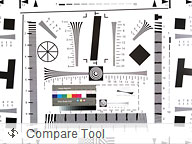
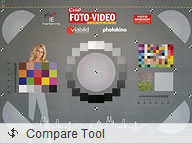





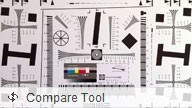
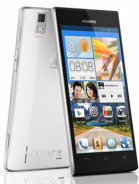
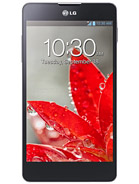
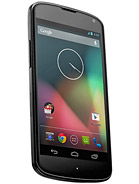
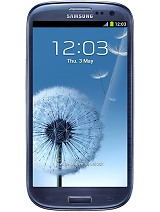


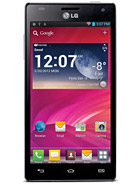
No comments:
Post a Comment